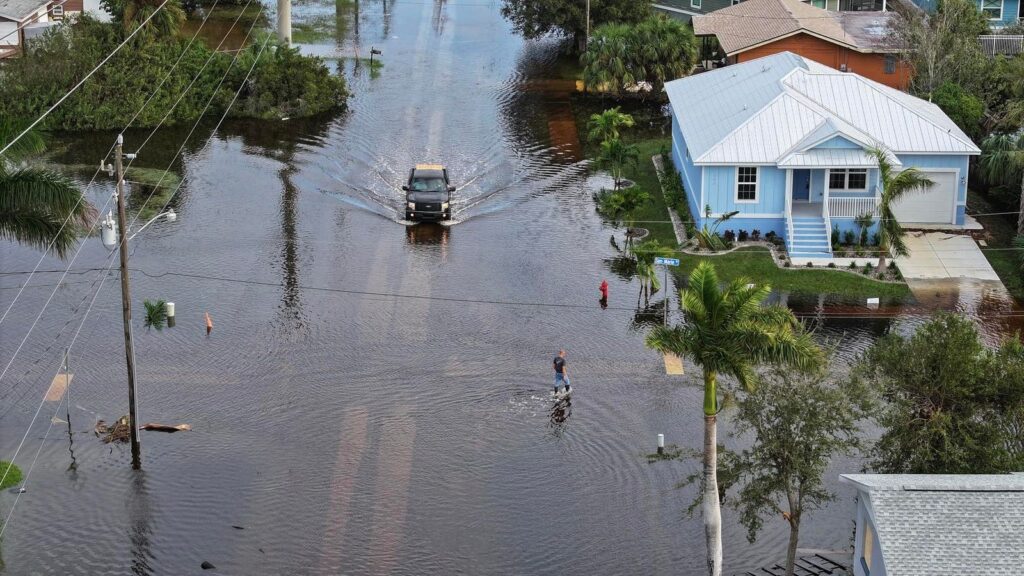In the wake of Hurricane Milton’s landfall in Punta Gorda, Florida, on October 10, 2024, the need for financial assistance to rebuild lives is greater than ever. As communities grapple with the reality of destruction and displacement, understanding the various forms of aid available becomes essential for recovery. Whether for individuals, families, or businesses, a range of financial assistance options exist that aim to alleviate the burdens caused by natural disasters like hurricanes. From federal programs to local charities, these resources can hasten the recovery process by providing vital funds and services.
One of the primary avenues for financial relief is the Federal Emergency Management Agency (FEMA) Individual Assistance Program. Designed to support individuals and households impacted by disasters, this program offers essential financial help in several areas. Displaced individuals may receive support for temporary housing, while homeowners can access funds to repair damaged properties. Moreover, the program aids in replacing essential items such as clothing and household goods and even covers medical or dental expenses incurred because of the disaster. To qualify, individuals must reside in a federally declared disaster area and demonstrate unmet recovery needs, emphasizing the program’s focus on those most affected by the hurricane.
Another significant source of recovery aid comes from the Small Business Administration (SBA), which provides disaster loans to cover a broad array of expenses. Homeowners and renters may apply for loans to repair or replace their primary residences and personal belongings, respectively. Additionally, business loans help address the costs of repairing damaged property and managing economic injuries from the disruption. The SBA’s application process, available through its disaster loan assistance portal, requires providing thorough documentation, including proof of income and details on damages. While processing can take two to four weeks, it remains a critical resource for those needing financial backing to rebuild after a hurricane.
Disaster Unemployment Assistance (DUA) presents another lifeline for individuals whose employment is directly affected by the hurricane. This federal program extends unemployment benefits to atypical groups, such as self-employed individuals and farmworkers, who may not qualify for standard benefits. Specifically tailored for people who’ve lost their job due to workplace destruction or other disaster-related employment disruptions, DUA helps maintain a steady income during the recovery period. Each state manages the application process, which typically requires applicants to submit documentation that validates their employment situation before the disaster. The need to apply within 30 days of disaster declaration underscores the urgency of accessing timely financial aid.
Food security is another pressing concern post-disaster, and the Supplemental Nutrition Assistance Program (SNAP) addresses this through its Disaster SNAP (D-SNAP) initiative. This program specifically targets individuals who may not qualify for standard SNAP benefits but face temporary financial constraints due to a disaster. D-SNAP provides rapid food assistance to those who’ve lost income or suffered property damage preventing access to food. The activation and application processes are managed at the state level, allowing affected individuals to apply online or at local centers. Those who apply for D-SNAP can expect quick benefits, offering critical support for families in the desperate days following a disaster.
Beyond federal aid, state disaster relief programs, non-profit organizations, and insurance claims enhance recovery options for impacted communities. State programs closely complement federal assistance, often addressing local needs more swiftly. Agencies like the American Red Cross and the Salvation Army frequently provide immediate relief for essential services, food, and shelter in the aftermath of disasters. Additionally, filing for homeowners or renters insurance claims should be a priority to expedite coverage for various expenses stemming from property damage and loss. Moreover, financial institutions may offer private loans with favorable terms to help bridge the gap between costs and insurance payouts, ensuring individuals can move forward even if some needs aren’t fully met by available resources.
In conclusion, while recovering from a hurricane like Milton poses significant challenges, there are multiple financial assistance options available to aid individuals, families, and businesses in their recovery efforts. Programs such as FEMA’s Individual Assistance, SBA disaster loans, DUA, and D-SNAP play vital roles in addressing immediate needs for financial stability and sustenance. Supplementary aid from state programs, non-profits, insurance claims, and private loans can further facilitate the rebuilding process. A well-informed approach can empower those affected to not only survive but also rebuild and thrive in the aftermath of natural disasters.

